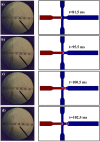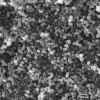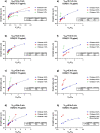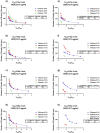Microfluidic-assisted synthesis and modeling of stimuli-responsive monodispersed chitosan microgels for drug delivery applications
- PMID: 35589742
- PMCID: PMC9120176
- DOI: 10.1038/s41598-022-12031-9
Microfluidic-assisted synthesis and modeling of stimuli-responsive monodispersed chitosan microgels for drug delivery applications
Abstract
Droplet microfluidic has been established to synthesize and functionalize micro/nanoparticles for drug delivery and screening, biosensing, cell/tissue engineering, lab-on-a-chip, and organ-on-a-chip have attracted much attention in chemical and biomedical engineering. Chitosan (CS) has been suggested for different biomedical applications due to its unique characteristics, such as antibacterial bioactivities, immune-enhancing influences, and anticancer bioactivities. The simulation results exhibited an alternative for attaining visions in this complex method. In this regard, the role of the flow rate ratio on the CS droplet features, including the generation rate and droplet size, were thoroughly described. Based on the results, an appropriate protocol was advanced for controlling the CS droplet properties for comparing their properties, such as the rate and size of the CS droplets in the microchip. Also, a level set (LS) laminar two-phase flow system was utilized to study the CS droplet-breaking process in the Flow Focused-based microchip. The outcomes demonstrated that different sizes and geometries of CS droplets could be established via varying the several parameters that validated addressing the different challenges for several purposes like drug delivery (the droplets with smaller sizes), tissue engineering, and cell encapsulation (the droplets with larger sizes), lab-on-a-chip, organ-on-a-chip, biosensing and bioimaging (the droplets with different sizes). An experimental study was added to confirm the simulation results. A drug delivery application was established to verify the claim.
© 2022. The Author(s).
Conflict of interest statement
The authors declare no competing interests.
Figures










Similar articles
-
Controllable size and form of droplets in microfluidic-assisted devices: Effects of channel geometry and fluid velocity on droplet size.Mater Sci Eng C Mater Biol Appl. 2020 Apr;109:110606. doi: 10.1016/j.msec.2019.110606. Epub 2019 Dec 30. Mater Sci Eng C Mater Biol Appl. 2020. PMID: 32228988
-
Enhancing the biocompatibility of microfluidics-assisted fabrication of cell-laden microgels with channel geometry.Colloids Surf B Biointerfaces. 2016 Nov 1;147:1-8. doi: 10.1016/j.colsurfb.2016.07.041. Epub 2016 Jul 20. Colloids Surf B Biointerfaces. 2016. PMID: 27478957
-
Droplet-based microfluidics for drug delivery applications.Int J Pharm. 2024 Sep 30;663:124551. doi: 10.1016/j.ijpharm.2024.124551. Epub 2024 Aug 4. Int J Pharm. 2024. PMID: 39106935 Review.
-
5-Fluorouracil monodispersed chitosan microspheres: Microfluidic chip fabrication with crosslinking, characterization, drug release and anticancer activity.Carbohydr Polym. 2020 May 15;236:116094. doi: 10.1016/j.carbpol.2020.116094. Epub 2020 Feb 29. Carbohydr Polym. 2020. PMID: 32172896
-
Trends in Droplet Microfluidics: From Droplet Generation to Biomedical Applications.Langmuir. 2022 May 24;38(20):6233-6248. doi: 10.1021/acs.langmuir.2c00491. Epub 2022 May 13. Langmuir. 2022. PMID: 35561292 Review.
Cited by
-
Roadmap on multifunctional materials for drug delivery.JPhys Mater. 2024 Jan 1;7(1):012502. doi: 10.1088/2515-7639/ad05e8. Epub 2023 Dec 21. JPhys Mater. 2024. PMID: 38144214 Free PMC article. Review.
-
Hydrogel Microparticles for Bone Regeneration.Gels. 2023 Dec 28;10(1):28. doi: 10.3390/gels10010028. Gels. 2023. PMID: 38247752 Free PMC article. Review.
-
Droplet-Based Microfluidics: Applications in Pharmaceuticals.Pharmaceuticals (Basel). 2023 Jun 28;16(7):937. doi: 10.3390/ph16070937. Pharmaceuticals (Basel). 2023. PMID: 37513850 Free PMC article. Review.
-
Physicochemical Characterization and Oral Bioavailability of Curcumin-Phospholipid Complex Nanosuspensions Prepared Based on Microfluidic System.Pharmaceutics. 2025 Mar 20;17(3):395. doi: 10.3390/pharmaceutics17030395. Pharmaceutics. 2025. PMID: 40143058 Free PMC article.
-
Droplets microfluidics platform-A tool for single cell research.Front Bioeng Biotechnol. 2023 Apr 19;11:1121870. doi: 10.3389/fbioe.2023.1121870. eCollection 2023. Front Bioeng Biotechnol. 2023. PMID: 37152651 Free PMC article. Review.
References
-
- Rahimzadeh Z, et al. A rapid nanobiosensing platform based on herceptin-conjugated graphene for ultrasensitive detection of circulating tumor cells in early breast cancer. Nanotechnol. Rev. 2021;10:744–753. doi: 10.1515/ntrev-2021-0049. - DOI
MeSH terms
Substances
LinkOut - more resources
Full Text Sources
Miscellaneous

